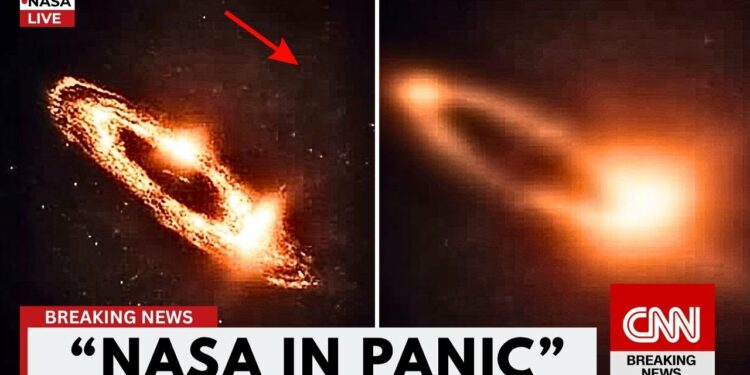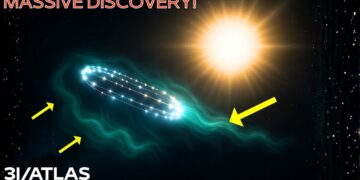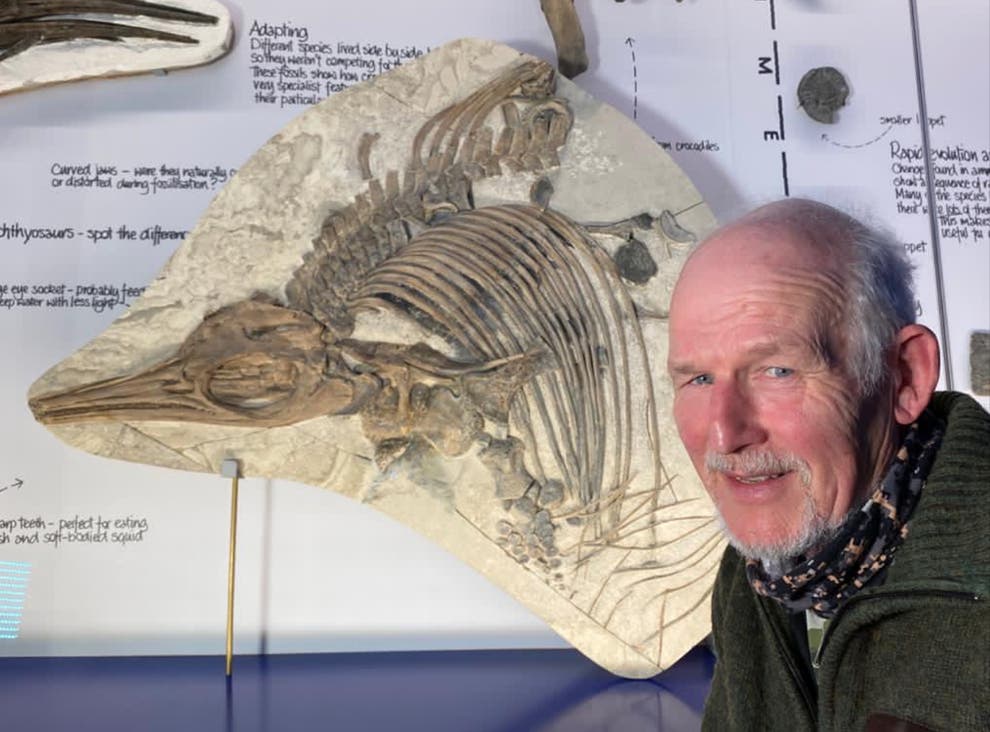3I/Atlas, this strange interstellar visitor, is not just a comet, not just a frozen rock from another star system. 3I/Atlas had been struck head-on by the sun’s own plasma and lost its tail. On September 25th, the sun erupted in a way nobody alive had ever seen before. For days, its surface had been boiling with dark sunspots and looping arcs of plasma, like warning tremors before an earthquake. But at 3:47 UTC, the tension finally snapped. A blinding flash rolled across the sun’s disc, and a colossal loop of superheated gas rose tens of thousands of miles high, then snapped loose and hurled itself into space—a coronal mass ejection, or CME. It wasn’t just light and heat; it was billions of tons of electrified plasma threaded with magnetic fields, moving at over 1.6 million mph. Scientists watching the real-time feed saw their gauges spike far beyond the red zone. Instruments calculated the blast at about 1.2 trillion megatons of kinetic energy—an amount so large it’s hard to comprehend. Think of every nuclear bomb humanity has ever built, then multiply that by 20 million. Or imagine the energy released by the asteroid impact that killed the dinosaurs, then imagine 20 of those detonating at once, hurled straight at one small point in space.
NASA’s space weather models showed the shock wave rolling through the inner solar system like a flaming hurricane. Its aim was terrifyingly precise: directly at 3I/Atlas, the enormous green interstellar object streaking toward a near pass with Mars. For months, this emerald stranger had been unsettling scientists. It was already far heavier than any known comet—more than 33 billion tons, with a core over 5 km across. Its green glow came from gases and metals that don’t belong in a normal comet’s tail: diatomic carbon, nickel, cobalt—compounds more like industrial exhaust—and frozen cosmic ice. And now, at the moment of its closest approach to the sun, it would take a hit from the most powerful solar storm ever measured.
In observatories from Hawaii to Chile to the Canary Islands, astronomers gathered in control rooms and stared at their screens in dark anticipation. Comets have been known to lose their tails or even disintegrate under much smaller CMEs. This one was orders of magnitude larger—a hammer blow of star-forged plasma capable of ripping apart a gas giant’s magnetosphere, so strong it could warp Earth’s magnetic field into a knot and snap it. When the CME finally struck, the spectacle was immediate and shocking. The green tail of 3I/Atlas snapped like a whip, a luminous streamer tearing free and vanishing into the solar wind in less than a minute. Its bright coma—the glowing halo of gas around its nucleus—collapsed inward as if someone had pulled the plug. Spectrographs from Chile’s Rubin Observatory showed its light curve plunging. Doppler readings from NASA’s Deep Space Network registered a breathtaking deceleration, from a blistering 37,000 miles an hour down to just 5,000, as though an invisible hand had slammed on the brakes. For the first time since its discovery, the mighty green visitor looked like a dark, inert lump, drifting helplessly toward the sun.
In observatories from Chile to Hawaii, researchers erupted in cheers. Months of sleepless nights and speculative panic seemed to dissolve in an instant. The anomalous mass and green glow, the Mars flyby, the whispered worries of an alien mothership—all of it neutralized by our star. It felt like the end of a cosmic horror movie where the monster finally burns up in the last reel. But then the impossible happened. Exactly 2 hours and 7 minutes after the CME strike, a faint flicker appeared at the heart of the darkened mass. It pulsed once, twice, then flared violently—a beacon bright enough to saturate detectors. Sensors at the European Space Agency’s Solar Orbiter picked up a surge of emissions: the same nickel, cobalt, and diatomic carbon signature as before, but stronger, richer, unmistakable. In a single breathtaking moment, a new tail shot out from the nucleus—perfectly symmetrical, emerald green, and even more brilliant than the original. And then the speed readings ticked upward: 10,000 mph, up to 50,000, 100,000, until the object was once again blasting along at 37,000 mph on its path toward Mars, as if nothing had happened at all.
What people were seeing defied physics. A natural comet can’t be hit by a plasma wave powerful enough to melt planets and then casually regenerate its tail and speed. Even the strongest magnetic field of any planet in our solar system would have been torn apart in that blast. Yet here was 3I/Atlas, emerald tail blazing, moving at full speed as if it had fed on the sun’s fury instead of being destroyed by it. Scientists were left staring at their screens in stunned silence. No natural comet could regrow a tail and regain its exact velocity within minutes—not after being hit by a plasma wave powerful enough to boil oceans. Even the most powerful planet in our solar system would have been scorched under that assault. And yet here was 3I/Atlas, emerald tail blazing and moving at full speed, shrugging off physics as though physics did not apply.
Lopez explained it in simple terms. For weeks before September 25th, instruments on NASA’s Solar Dynamics Observatory had shown odd patterns on the sun’s surface: tiny magnetic quakes lining up with the side of the sun facing 3I/Atlas. It looked, he said, like something was poking or tickling the sun’s magnetic field until it snapped. To him, the timing of the CME wasn’t a coincidence. It was as if 3I/Atlas had known exactly when the eruption would happen—or had caused it. He compared it to a ship at sea raising a sail to catch a gust of wind. Only here, the wind was a billion-ton blast of plasma and magnetic fields powerful enough to strip the air off a planet. Instead of dying under that storm, 3I/Atlas may have opened its sails and absorbed it. “We’ve never seen anything like it,” Lopez said. If this is a comet, it’s one with a powerful system beyond our comprehension.
Lopez’s working idea was that the object isn’t a snowball of ice and dust at all, but a gigantic machine wrapped in a kind of invisible shield. Imagine a huge magnetic bubble or super-strong electromagnetic net around it. Such a bubble could bend the sun’s plasma around the craft, soak up the energy, and funnel some of it inside. In this way, the CME—which should have been fatal—would instead become a refueling event. He even speculated about the kind of engine that could do this. One possibility, he said, was a type of fusion engine helped by an unknown catalyst from dark matter. In normal fusion, like the reactions inside our sun, you need incredible heat and pressure. But if you could use something exotic to make fusion easier, you could run a power plant in space using the sun’s own plasma as fuel. It is speculative physics on Earth, but a logical path for a civilization millions of years ahead. In such a system, a coronal mass ejection would be a free tank of fuel, not a death sentence.
Lopez also highlighted hard evidence to back this up through a reanalysis of Hubble and ground-based observations. Polarization measurements hinted at an extremely smooth surface under the coma, unlike the jagged rock or ice surfaces of known comets. Radar returns from Goldstone showed a faint lattice pattern inconsistent with a natural body. The object’s mass distribution—a dense outer ring and hollow interior—matched what you’d expect from a gigantic shell rather than a solid core. If you put all of this together, the simplest explanation is that we’re not looking at a natural object at all. We’re looking at a machine that’s using our star as an energy source. The strange pulsing brightness could be its fusion drive throttling in response to solar energy. And its apparent swelling mass might be the result of harvesting planetary material—a ship refueling on the fly. That would explain why it seemed to grow as it approached the sun, why its gas ratios matched industrial alloys, and why it shrugged off the sun’s greatest plasma storm as if it were nothing.
And the numbers backed up the fear. After the CME, 3I/Atlas wasn’t just alive—it was brighter, larger, and heavier, as if it had fed on the sun. Its mass estimate crept past 33 billion tons. Its magnetic field readings from interplanetary probes spiked. Instruments tracking Mars’s orbit picked up a subtle but measurable tug—a few hundred meters of displacement over a handful of days. For the first time in recorded history, an object from outside the solar system was exerting force on a planet. But as 3I/Atlas roared past its new perihelion, astronomers detected something even stranger. Mars’s orbit had shifted infinitesimally but measurably by a few hundred meters, forcing planetary ephemeris models to be updated to account for a new gravitational or magnetic anomaly.
The implication was staggering: 3I/Atlas’s magnetic field was so intense it could tug on an entire planet. Even more unsettling, its flight path was unmistakably hyperbolic—the open-ended trajectory of an interstellar visitor. Unlike planets, comets, or asteroids locked into closed ellipses and held in the sun’s grip, a hyperbolic path means it is not bound by the sun’s gravity at all. If its field continues to grow as it approaches Mars, the red planet could be dragged slightly out of its stable orbit. Over time, even a tiny perturbation could cascade, altering the orbital resonances of the inner solar system. This slow, invisible push could swell into chaos: meteor storms sweeping across Earth’s sky, entire asteroid families flung inward, and Mars itself sliding closer with each revolution. In the most extreme models, the red planet’s path intersects Earth after several orbits, creating the real possibility of a planetary collision or a chain of impacts unlike anything since the solar system’s formation. Even without a direct hit, the gravitational disruption could permanently warp the orbits of both Earth and Mars, scramble our tides and seasons, and transform the inner solar system from a predictable clockwork into a cosmic billiard table where no world is safe.
No known comet can do this. No known natural object has both the mass and the active field strength to distort planetary orbits. Even Jupiter, with a mass 318 times that of Earth, has a magnetic field nowhere near capable of pulling Mars off its course at millions of miles away. For 3I/Atlas to achieve this, it would need a magnetosphere billions of times stronger than Earth’s and an energy source rivaling a star’s output. In other words, technology far beyond anything we could even conceptualize.
For now, all eyes are on the Mars flyby. In a matter of days, 3I/Atlas will pass within 1.67 million miles of the red planet—cosmically close. Space agencies have trained every available telescope and probe on the encounter, desperate to see whether the magnetic anomaly strengthens. If Mars wobbles further, the implications for Earth are immediate. But as Lopez admits, our best planetary defense systems are useless against something of this scale. Nuclear weapons, kinetic impactors, even exotic gravity tractors are designed for asteroids a few hundred meters across, not a 5 km alien megastructure.
Do you believe 3I/Atlas is a natural interstellar comet? Or could it actually be alien technology harvesting our sun’s energy?























